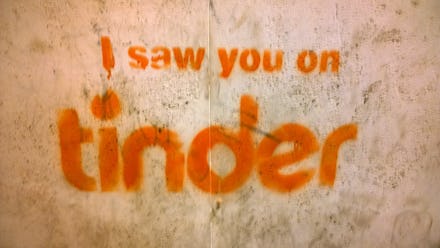That 'Tinder Gives You STDs' Report Is Going Viral for All the Wrong Reasons

There's a shocking statistic crowding everyone's newsfeed — and we're all blaming Tinder for it.
The Rhode Island Department of Health released data on a wave of STIs plaguing the state. From 2013 to 2014, the number of infectious syphilis cases increased by 79%, gonorrhea cases rose by 30% and new HIV cases rose by nearly 33%, according to a state press release.
The rise was most prevalent among young people and gay communities. So what's to blame for the uptick? According to the health department, an increase in high risk behaviors, including "using social media to arrange casual and often anonymous sexual encounters."
That means Tinder, right?
Don't blame the app, blame unsafe sex: Blaming Tinder is easy and compelling, as headlines like "Tinder and Hookup Apps Blamed for STDs" and "Swipe Right for STDs" illustrate. Utah also saw "skyrocketing" STD rates that were then linked to Tinder. But how feasible is it that one app, which only reaches about 3% of all American cellphone users, could really be responsible for a 79% increase in the clap?
Not likely, and that's because it's our behaviors — not an app alone — that cause the spread of STIs. Notably, the Rhode Island Department of Health also cited a lack of condom use, multiple sex partners and drunken hookups as culprits behind the STI rise. In short, it's about the decisions we make after we swipe right.
"The main culprit for spreading STIs is unsafe sex: not using condoms consistently, not using them properly and not communicating sexual health information with partners," Zhana Vrangalova, sex researcher and founder of the Casual Sex Project, told Mic. Tinder declined to comment when reached by email.
Why we're not being so safe: But the connection between Tinder and STIs isn't all wrong. Past studies do suggest a link, including one from 2013 that linked entries on Craigslist to a nearly 16% increase in HIV transmissions between 1999 and 2008. A 2014 study that looked at men-seeking-men apps like Grindr found that the app users were more likely to report an STI — but they also reported more sexual partners in general.
The takeaway is that people who like casual sex may be more likely to be scrolling through Grindr and Tinder. And, as Vrangalova said, "Mathematically speaking, more partners is more likely to lead to more STIs."
And apps like Tinder give us more opportunities to have casual — and often unsafe — sex. "It's a new mechanism for engaging in sexual activity without having that conversation about condom use or their last HIV or STI screening. There's more access to anonymous sexual activity," Nicole Alexander-Scott, Director of Rhode Island Department of Health, told Mic.
Alexander-Scott told Mic that after years of collecting data, the department found that more of the newly infected and their partners were reporting having met on social media and geo-located apps.
Whether it's Tinder (and a more reckless "Tinder mindset") that's encouraging more unsafe sex, or it's simply that apps have given us more chances for more random partners, what's clear is this: It's unsafe sex that's causing the STIs.
"Instead of blaming and stigmatizing the apps, what we should be doing is figuring out ways these apps can be used to encourage the most sexually active people to practice safer sex," said Vrangalova.
It's not Tinder — it's us.